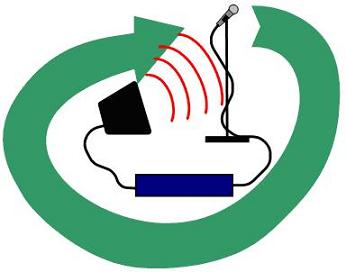|
|
What is feedbackFeedback occurs when a microphone (or other input like a guitar pickup) detects enough sound from a speaker that when the signal is run through the system it becomes louder than the first time and the mic picks up an even louder signal.
Note that feedback requires an acoustic input such as a mic (or guitar). A CD player will never be the source of feedback. Solving Feedback
Distance
If you double the distance from the speaker to the mic, you just cut the sound by 4. If you halve the distance from the mic to the source you just improved the gain before feedback by 4.
Direction Note: Some microphones (and some speakers) are omni directional - these pick up just as well from the back as from the front.
EQ
Note: Applying EQ to reduce mic feedback should be the last resort. EQ changes should be minimized to avoid reduction in sound quality.
Feedback Eliminators
Unfortunately Feedback Eliminators are expensive and still won't solve all the problems. It is best to use conventional methods first. |





